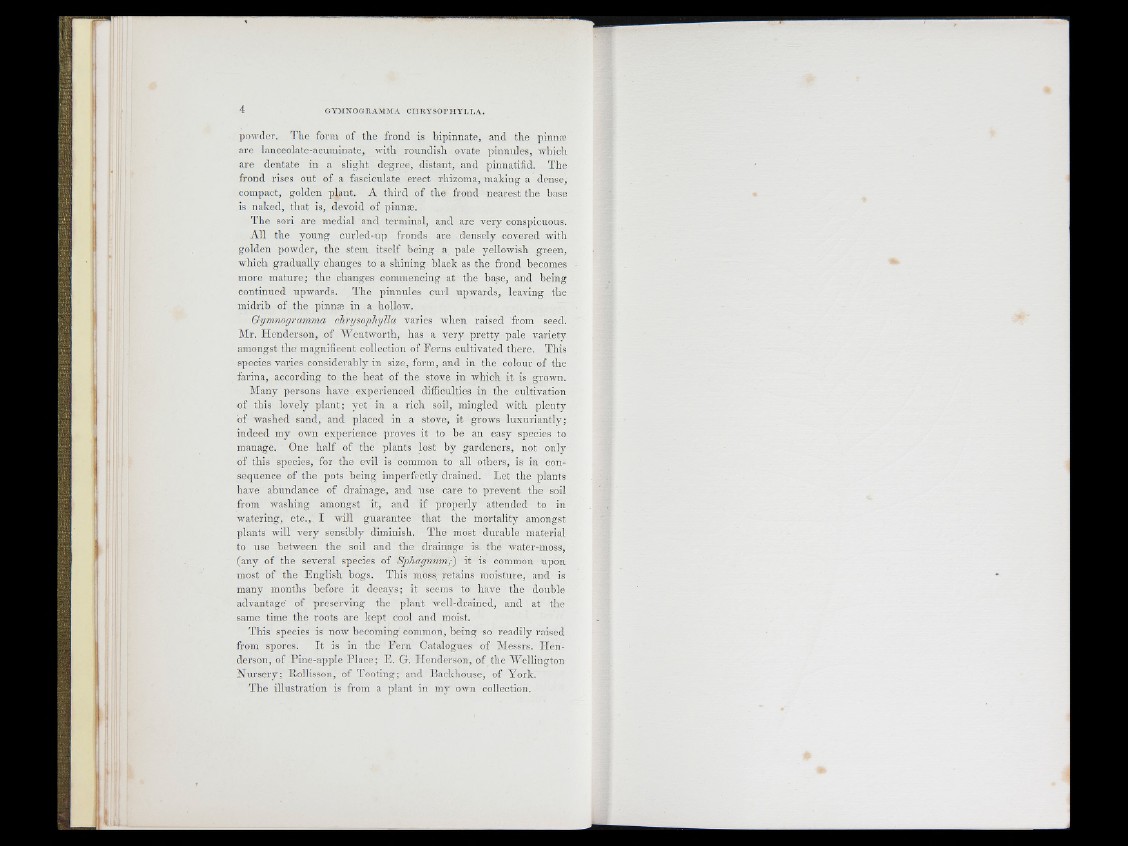
pnwdcv. The form of the frond is hipinnate, and the pinnae
are lanceolate-acuminate, with roundish owate pinnules, which
are dentate in a slight degree, distant, and pinnatifid. The
frond rises out of a fasciculate erect rhizoma, making a dense,
compact, golden plant. A th ird of the frond nearest the base
is naked, that is, devoid of pinnre.
The sori are medial and terminal, and are very conspicuous.
All the young cur!ed-up fronds are densely covered with
golden powder, the stem itself being a pale yellowish green,
Avhich gradually changes to a shining black as the fi'ond becomes
more mature; the changes commencing at the base, and being
continued upwards. The pinnules curl upwards, leaving the
midrib of the pimire in a hollow.
Gymnogramma chrysophylla varies when raised from seed.
]\Ir. Henderson, of IVentworth, has a very p re tty pale variety
amongst the magnificent collection of Ferns cultivated there. This
species varies considerably in size, form, and in the colour of the
farina, according to the heat of the stove in which it is grown.
IMany persons have experienced difficulties in the cultivation
of this lovely plan t; y e t in a rich soil, mingled with plenty
of washed sand, and placed in a stove, it grows lu x u rian tly ;
indeed my own experience proves it to be an easy species to
manage. One h a lf of the plants lost b y gardeners, not only
of this species, for the evil is common to all others, is in consequence
of the pots being imperfectly drained. L e t the plants
have abundance of drainage, and use care to prevent the soil
from washing amongst it, and if properly attended to in
watering, etc., I will guarantee th a t the mortality amongst
plants will v ery sensibly diminish. The most durable material
to use between the soil and the drainage is the water-moss,
(any of the several species of Sphagnumi) it is common upon
most of the E nglish bogs. This moss, retains moisture, and is
many months before it decays; it seems to have the double
advantage of preserving the plant well-drained, and at the
same time the roots are kep t cool and moist.
This species is norv becoming common, being so readily raised
from spores. I t is in the F e rn Catalogues of Messrs. H e n derson,
of Pine-apple Place; E. G. Llenderson, of the Wellington
N u rse ry ; Rollisson, of Tooting; and Backhouse, of York.
The illustration is from a plant in my own collection.